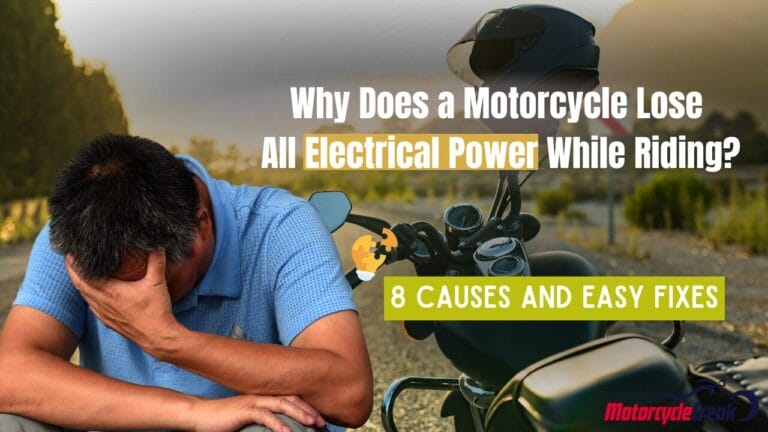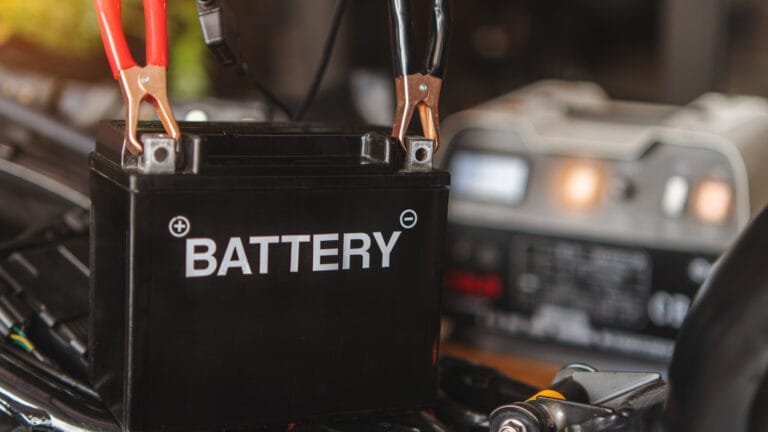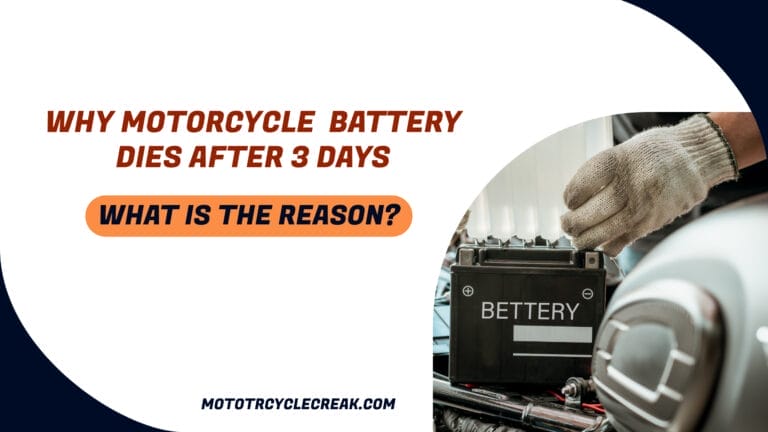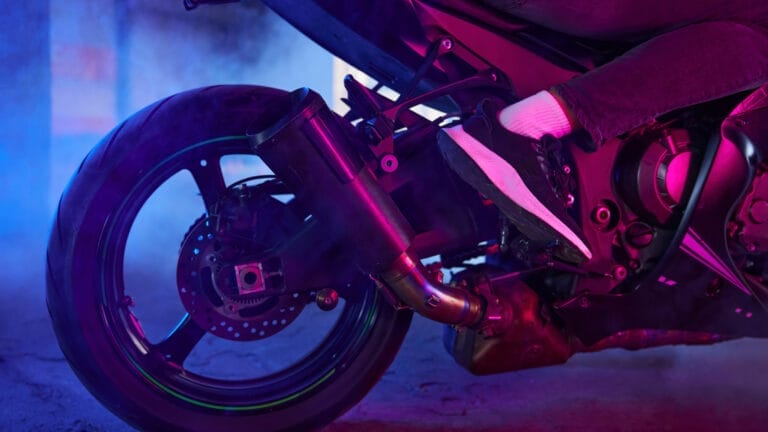Why Motorcycle Battery Dies After A Week? Reason & Solution
The battery on vehicles such as your motorcycle controls everything that needs electricity. Not a desired thing if it dies within a few days, is it?
But what causes your motorcycle battery to die after a week? The complete drain of electrical charge is translated as “Dead Battery.” Factors like the following can lead to battery discharge quicker than you can imagine.
- Different components pulling charge, A.K.A parasitic draw
- Battery overload
- Faulty voltage regulator
- Problems in the wiring and corrosion
However, this does not paint the whole picture. To understand it on a technical level, a deep dive is required. Lucky for you, in this article, I’m going to delve into the nitty-gritty of why motorcycle batteries die after a week.
Causes of Motorcycle Battery Dying After a Week
The grounds for a dead battery inside the bike can be tricky to understand. But they are quite straightforward. It’s much easier to resolve them once you get familiar.
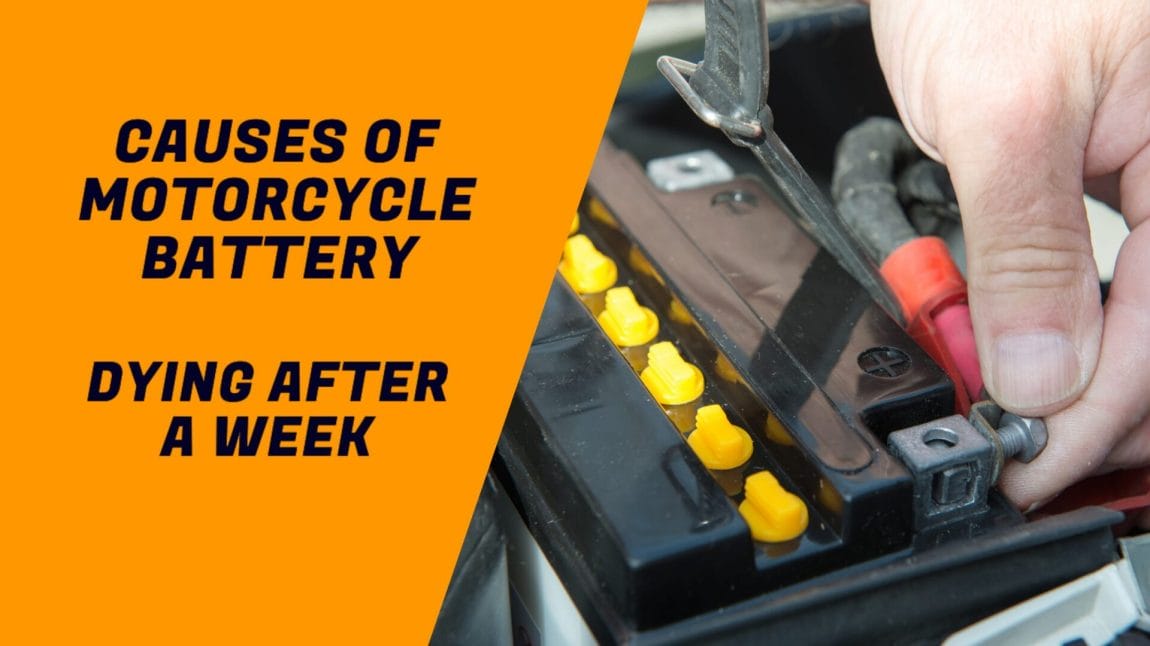
Let’s check the reasons that make the battery dead after a week.
1. Parasitic Draw
Parasitic draw means continuous power consumption by electrical components in a vehicle, even if the ignition is switched off. In this instance, it’s your motorcycle.
More often than not, a bike is equipped with numerous accessories such as alarms, GPS, USB chargers, and more. They can pull charge from the battery if not installed properly or malfunction.
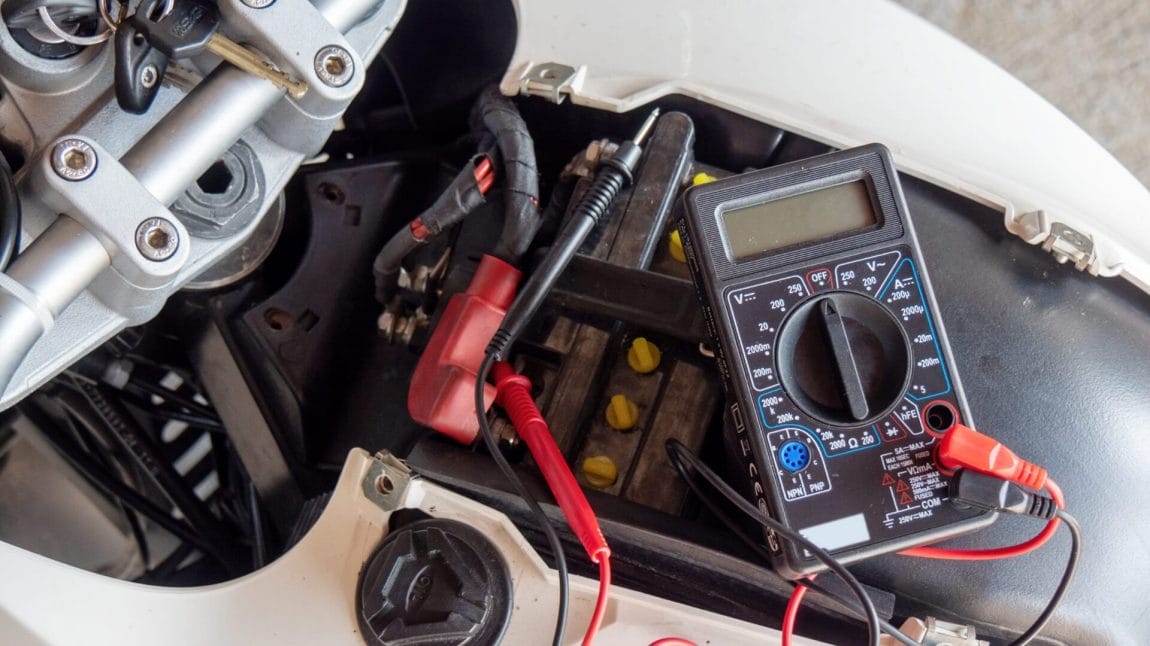
After a certain period, they can develop issues that lead to extended power draw. Believe it or not, the ignition switch can get into the defective list and cause the battery to drain faster.
Fix
- Disconnect the negative terminal of the battery.
- Connect a multimeter between the negative post of your battery. Set it to Ampere mode. You should see a reading less than 50 mA. If it is more than that, yes, there is a parasitic draw.
- Pull the fuses one by one until you observe a drop in reading. This is helpful in triangulating the problematic circuit.
- Replace the component that is causing the issue or repair it with the help of a professional.
Watch the following video on how to fix the parasitic draw of the battery.
2. Battery Overload
If your motorbike’s battery receives too much current than it can handle safely, it is called overloading. The underlying reasons for this are faulty alternators, damaged circuits, sulfation, and connecting too many accessories.
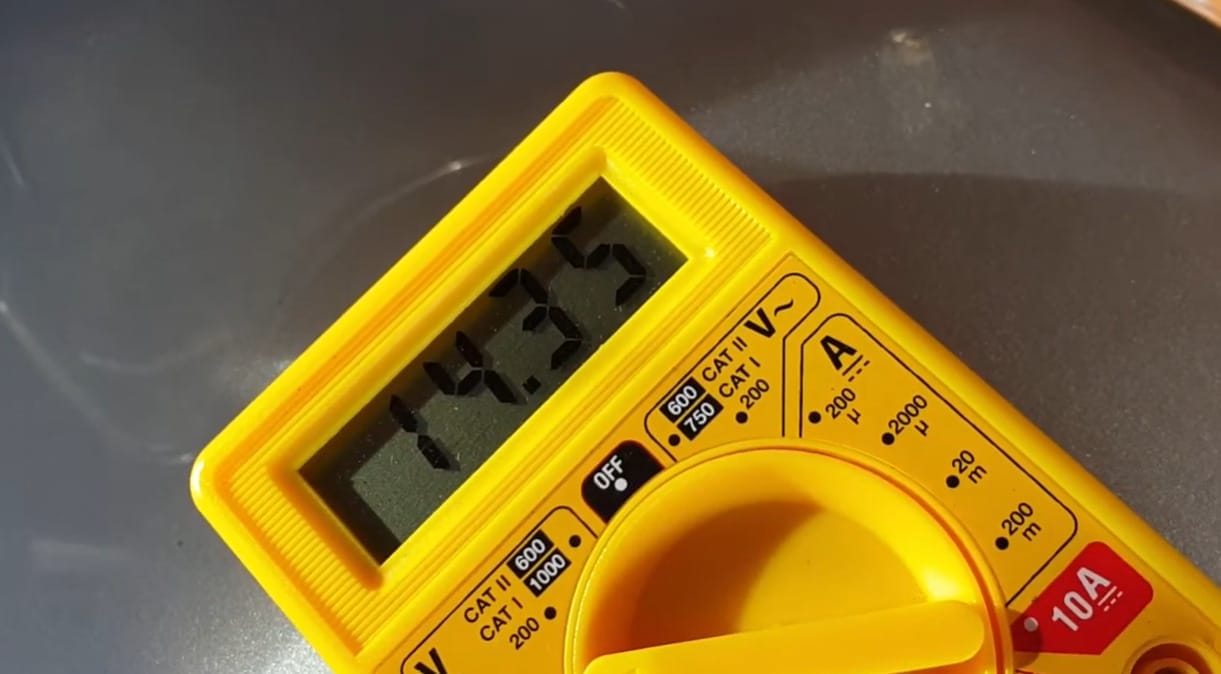
Due to consistent usage, heat and vibration wear out the rotor inside the alternator. The same goes for the lead acid battery. Under prolonged stress, crystals grow around the battery plates.
Ultimately, the battery’s overall capacity reduces, and it can’t hold charge, store, and deliver energy properly.
Fix
- Check for short circuits. Carefully observe the wirings for any obvious damage or misconnection. Replace the wires or repair the connection.
- Connect the battery to a multimeter. Set it to DC voltage. Start the engine and observe the meter results. The reading should be between 12 and 13 volts. However, it can go up to 14.5 volts. If you see any fluctuation from this threshold, you need to replace the alternator.
- Use a desulfation charger to break down the sulfate crystals. You can also use Epsom salt to dissolve the particles. Get an expert’s help because there is acid inside the battery.
3. Problem in the Voltage Regulator
The voltage regulator or stator inside the battery controls electrical output. It maintains a steady voltage level and guarantees the battery receives a stable charge. It turns alternating current (AC) to direct current (DC) to help charge the battery.

When the voltage regulator develops a fault, you may expect the inability to retain a charge. Overcharging or undercharging damages the cells as the regulator cannot perform correctly.
Not to mention the voltage fluctuation, which creates volatile electrical conditions.
Fix
- Before everything, bat an eye over the voltage regulator and the cables. If you see any damage, such as burn marks or loose connection, either replace it or tighten the wire.
- Make sure the regulator has a proper ground connection.
- If other attempts fail, you may need to replace the voltage regulator. It will cost you $10 to $15.
4. Loose & Corroded Connection
Corrosion is a pretty common phenomenon on motorcycle batteries. It happens mostly due to inactivity or extreme moisture in the atmosphere. And guess what?
It leads to battery issues such as rapid discharge. The same goes for loose connections as well. Vibrations during rides can loosen the wires in different components that connect to the battery.
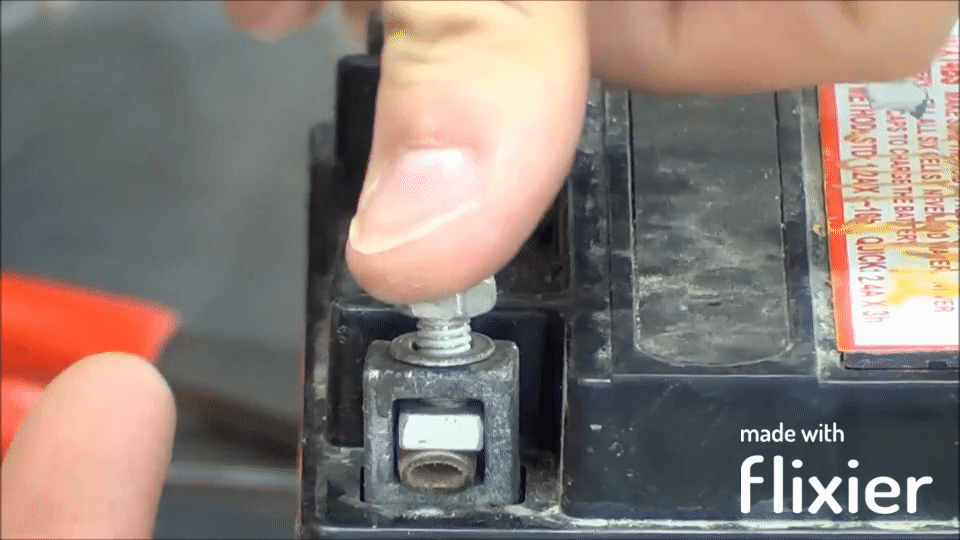
This also creates faulty ground connections. So, the alternator cannot pass the necessary current to the battery. Therefore, incomplete charge cycles take place.
Lastly, electrical circuitry can also become short due to rust and faulty wiring. It is one of the primary reasons for battery malfunction.
Fix
- Have a close look around the terminals and wiring harnesses.
- Detach the (-) negative terminal followed by the (+) positive one to avoid a short circuit.
- Use a metal brush to clean up the corrosion. You can also use sandpaper. Utilize a mixture of water and baking soda to rinse the rust.
- Apply some dielectric grease to evade oxidation on the cleaned terminal.
- Fasten loose bolts or screws with a wrench or other appropriate tools
How Long Should A Motorcycle Battery Hold Charge?
Motorcycle batteries get recharged automatically when you ride it. So it will hold a charge during its entire lifespan. A typical motorcycle battery lasts around 3 to 5 years.
However, things get a little shaky if you do not frequently ride your motorbike. In such an instance, the battery starts to self-discharge due to inactivity.
Now, this is an interesting thought. For example, a Lead-acid battery has a monthly discharge rate of 5%. Lithium-ion batteries, on the other hand, lose 10%. Nickel-metal hydride batteries release 7% of the charge.
All these batteries have a shelf life of 2-3 years. But factors like temperature, maintenance quality, state of charge, etc., can affect shelf life.
How Do You Preserve Motorcycle Battery Charge for Longer?
Getting into trouble and seeking a solution isn’t a good idea. Rather, it’s wise to take preventive measures to stop it from happening in the first place. This is why you must learn how to keep your motorcycle’s battery in shape.
- Ride Regularly. It will keep the battery charged all the time. Longer rides are recommended, as shorter ones might not come out as effective. If you use it as a daily commute, that should suffice.
- Charge the battery once a month if your motorcycle is left unused. That will preserve the battery’s overall help. Also, unplug it from the vehicle and store it in a cool, dry place.
- Ensure all electrical components are turned off when the engine is idle.
- Employ a battery maintainer to keep the charge at an optimal level. Connect it to the vehicle, especially when left idle for a while.
- Preserve the electrolyte levels of a lead-acid battery as per the manufacturer’s suggestion. Add distilled water from time to time, following the safety precautions.
Frequently Asked Questions
Investing in the battery dead issue, I’ve come across some popular yet essential queries. Let’s have a quick glance.
Do Motorcycle Batteries Drain When Not in Use?
Yes, motorcycle batteries drain when not used for an extended period. A phenomenon known as self-discharge causes this. Also, electrical pieces of equipment can be the culprit behind charge depletion, as I discussed before.
Will a Trickle Charger Recharge a Dead Motorcycle Battery?
Yes, a trickle charger can recharge a dead motorcycle battery. However, it takes a lot of time to complete the charging process. It’s due to the low amps that this charger emits, which is between 1 and 5 amps. So, it can take months to recharge the battery fully.
Final Thoughts
Navigating through the twists and turns of the dead battery enigma of the motorcycle is really difficult for a non-technical person. But as I’ve explained the reason elaborately, by now, I hope you have a sound idea of what can go wrong.
At the same time, before you hit hard with the battery issue, it’s always wise to prevent this from happening. Just take good care of it, maintaining a regular schedule.



